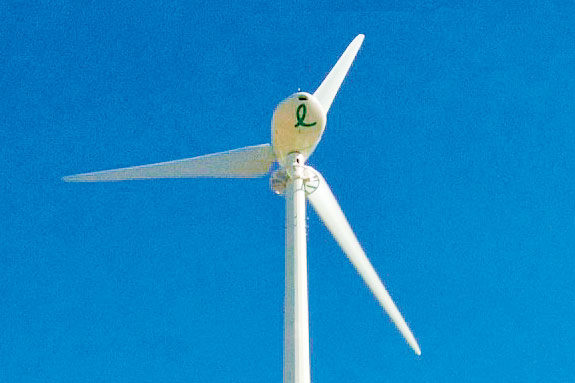There’s a well-known Bob Dylan song that you’ve all probably heard called “Blowin’ in the Wind.” It’s a famous song that has blown right into the Rock ‘n Roll Hall of Fame and was ranked No. 14 in Rolling Stone magazine’s “500 Greatest Songs of All Time.” The song asks a series of questions and answers them by simply singing, “The answer, my friend, is blowin’ in the wind.”
But there’s a question that isn’t part of the song that also can be answered with the famous chorus. The question is: “How can I offset the electricity I use in my dairy operation using clean energy?”
The answer, my friend, is blowin’ in the wind.
By deploying wind technology that generates electricity, you can offset the costs and the consumption of electricity from your local utility. Unlike your local utility, which likely burns some coal and spews into the atmosphere greenhouse gases like carbon dioxide, sulfur dioxide and nitrogen oxides, wind technology emits no toxic gases.
And wind power can be extremely efficient, converting as much as 47 percent of wind into usable energy, making wind one of the most effective forms of clean energy.
Dairy producers can reduce to zero their dependence on the electricity provided from their local utilities when they pair wind turbines with other clean energy technologies or by reducing their electricity consumption through the deployment of energy efficiencies.
In fact, according to the National Sustainable Agriculture Information Service, dairy producers should reduce “as much as possible” their energy consumption through efficiencies to reduce the size, and costs, of installing a wind turbine.
Combining these technologies will produce clean, reliable energy and significantly reduced energy costs for years – even decades – to come.

How they work
Wind technology is now available that can be safe and effective for virtually all dairy operations to generate enough power to run practically their entire operations. While many farmers may question the amount of wind available in their area, advanced wind turbines are designed to operate in areas with slow wind speeds.
Dairy operations where wind speeds are less than desirable can supplement the wind turbines with other energy generation technologies like solar panels to help generate the needed electricity.
Good wind turbines employ induction-based generators. In general, the wind turns the aerodynamic blades that are connected to a gearbox that cranks a generator, similar to a motor, except instead of consuming energy, the motor produces the power, which is routed to your operations.
The size of wind turbines differ greatly and can provide a vast array of electricity needs. A moderate-size, 50-kilowatt wind turbine can deliver as much as 230,000 kilowatt-hours a year, but the best wind solution is based on the dairy operation’s needs.
There are many variables that need to be considered when calculating the amount of energy that will be produced by a wind turbine, including average wind speed and height of the technology – the taller the turbine, the more wind energy created. For example, a wind turbine tower at 120 feet will produce approximately 100 percent more energy than a 30-foot tower, according to the National Sustainable Agriculture Information Service.
Where to start
Before investing in wind turbines, check with your local government, like your board of supervisors, planning commission or building inspector, to determine if there are regulations that you would need to abide by, such as height requirements or zoning issues regarding wind turbines.
Also, check with your local utility about potential rebates or tax credits available. More incentives are available now for energy technologies like wind, which can help you offset the initial costs of the wind turbines.
Couple the tax credits or incentives available with the energy cost savings, and wind turbines can be a lucrative, long-term investment for dairy operations.
Even if there are no incentives or rebates available in your area, wind power can be lucrative based solely on the energy costs you’ll save by reducing your dependence on the local electric utility.
Lastly, talk with your neighbors. This discussion can serve two purposes. First, this will give you the opportunity to address any concerns they may have about your plans for a wind turbine. Second, they may be interested too, in which case maybe you could pool your money to purchase a larger, mutually beneficial wind farm to help your neighbor reduce his or her electricity costs with clean energy.
And while wind energy can be an effective alternative to increasing energy costs, be sure you consult with a reputable and knowledgeable wind turbine representative. Consider a company that has a history of delivering results. As the popularity of wind technologies increase, so too do the number of companies offering the technology – some of which lack the experience needed to deliver electricity that takes you off the grid. PD
PHOTOS:
Top right: While many farmers may question the amount of wind available in their area, advanced wind turbines are designed to operate in areas with slow wind speeds.
Top left: The size of wind turbines differ greatly and can provide a vast array of electricity needs.
Photos courtesy of Mike Ontrop.

-
Mike Ontrop
- National Sales Manager
- Agricultural Division
- Email Mike Ontrop






